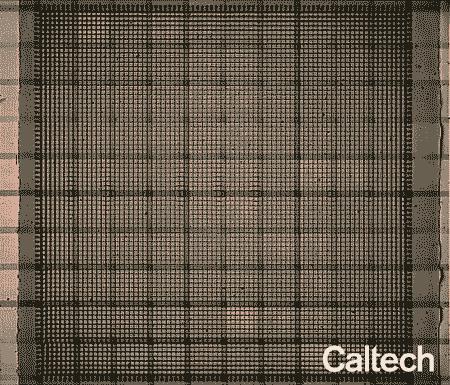
Metamaterials have been investigated for some years, most notably for their ability to manipulate light and sound waves in unusual ways, to make “invisibility cloaks” and tailored acoustic environments. The Caltech team has found a way to harness some of the properties of these bizarre crystalline structures in novel ways, which may have applications in energy storage and implantable devices.
_________________________________________________________
Further reading
- Metamaterials make 3D acoustic cloaking device
- 3D printed metamaterials offer novel optical properties
- Oxford team exploits properties of metamaterials
_________________________________________________________
Some metamaterials are reconfigurable: that is, their structure allows them to change shape. However, most of these are only able to toggle between two distinct states, like a switch turning on and off. Materials scientist Prof Julia Greer of Caltech, working in collaboration with mechanical and process engineer Dennis Kochmann of ETH Zürich and Arman Afshar, an engineer from Georgia Tech, created a material using silicon and lithium chemistry that can adopt “in-between” states along a continuum. The shape change is triggered by an electrical current, and removing the current freezes the shape.
The team refer to their discovery as an “architected material” in a paper in Nature. The key to its properties is an electrochemically-driven alloying reaction in a three-dimensional lattice of lithium made up from cuboid shapes coated with silicon. When a current is applied, the lithium and silicon form an alloy which buckles the lattice. The shape change can be controlled by varying the electric current: a small current will trigger a small change in shape, a larger one a much more drastic change.
The team took advantage of the fact that all lattice structures contain imperfections, by deliberately building in defects to imbue the material with their desired properties.
"The most intriguing part of this work to me is the critical role of defects in such dynamically responsive architected materials," said Xiaoxing Xia, a graduate student at Caltech and lead author of the Nature paper. Greer added: "This just further shows that materials are just like people, it's the imperfections that make them interesting. I have always had a particular liking for defects, and this time Xiaoxing managed to first uncover the effect of different types of defects on these metamaterials and then use them to program a particular pattern that would emerge in response to electrochemical stimulus."
In the Nature paper, Greer’s team describes a lattice with microscale straight beams that bend into sinusoidal curves when a current is applied, taking on tailored mechanical and vibrational properties. They used the ultra-resolution 3D printing process two photon lithography to construct the lattice. As a demonstration of its abilities, they fabricated a sheet of the material which change shape into the Caltech logo under electrical stimulation.
One useful application of this technology might be lighter, safer types of electrical battery. Many electrical storage materials expand and contract when charged and discharged, and the cycling between the two states induces mechanical degradation. Architected materials would be able to cope better with such cycling, making them last substantially longer, the team suggests.
"Electrochemically active metamaterials provide a novel pathway for development of next generation smart batteries with both increased capacity and novel functionalities. At Georgia Tech, we are developing the computational tools to predict this complex coupled electro-chemo-mechanical behavior," said Claudio Di Leo, a colleague of Arman Afshar.




April 1886: the Brunkebergs tunnel
First ever example of a ground source heat pump?